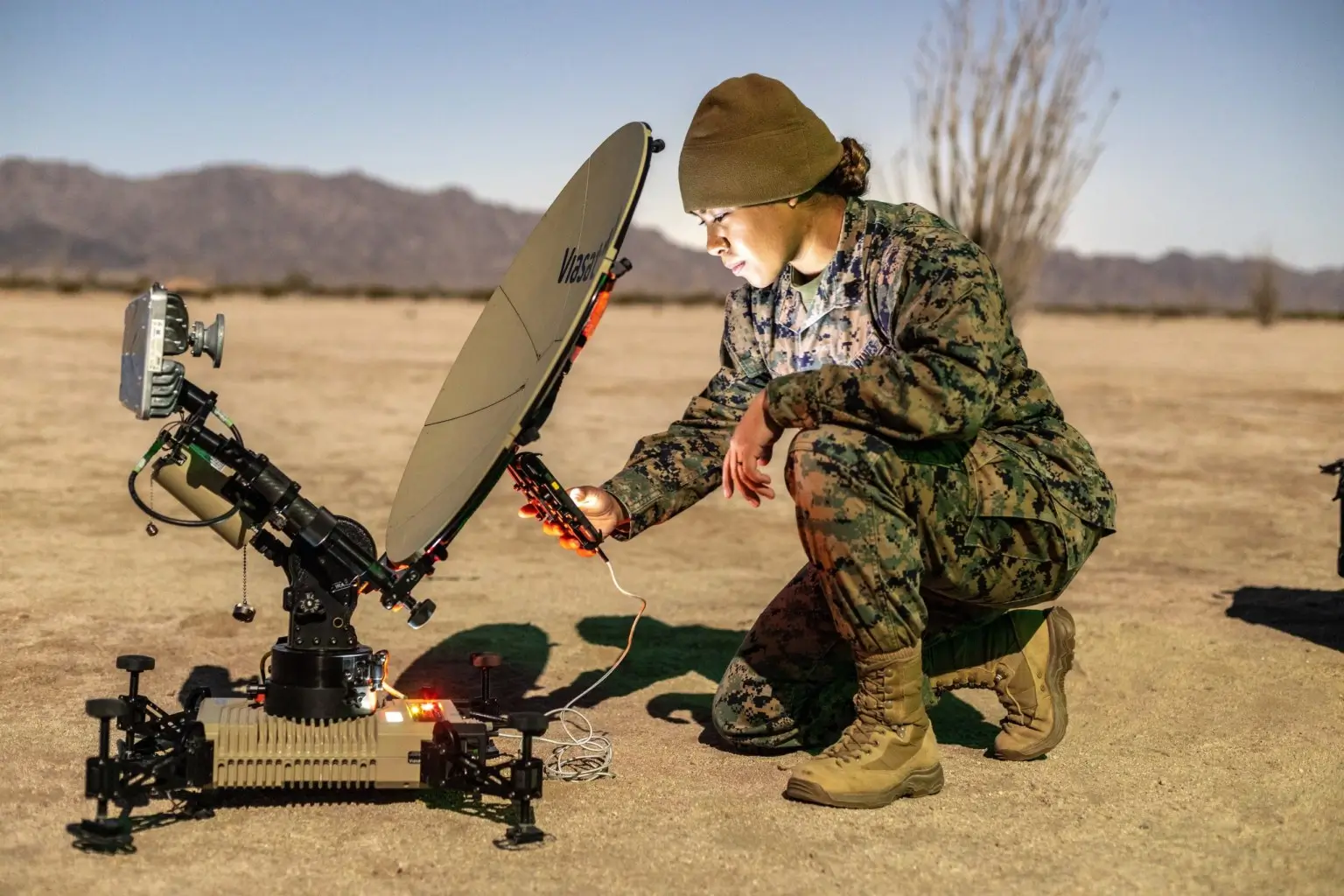U.S. Military’s Satellite Plans Human Touch to High-Tech Connections

Hey, have you ever wondered how the U.S. military keeps everyone connected, even in the wildest, most far-flung places? Picture this: a Marine squad in a jungle, a ship in the middle of the ocean, or a command center tracking a mission halfway across the globe. They all need to talk to each other—fast, reliably, and securely. That’s where some exciting new satellite communication (satcom) contracts come in, and trust me, it’s not just tech jargon—it’s about real people staying linked when it matters most.
The military is gearing up to pour billions into partnerships with private companies, tapping into their creativity to boost communication. We’re talking about three big projects: MECS2, M-GEO, and PLEO. These aren’t just contracts; they’re lifelines for troops and game-changers for how the military operates. Let’s dive in and see what they’re all about.
Meet the Big Three: MECS2, M-GEO, and PLEO
Imagine you’re trying to call a friend from a spot with zero cell service. Frustrating, right? Now multiply that by a thousand for the military, where dropped calls aren’t an option. These three initiatives are like the military’s new best friends, each bringing something special to the table:
- MECS2: This one’s for the Marines—$500 million to make sure they can chat, plan, and coordinate no matter where they’re deployed. It’s their “phone-a-friend” lifeline, wherever duty calls.
- M-GEO: Worth $900 million, this project brings in smaller, nimble satellites that can shift focus to wherever the action is. It’s like having a spotlight you can point exactly where you need it.
- PLEO: A massive $13 billion effort to deliver blazing-fast internet from space. Think of it as the military’s version of upgrading from dial-up to fiber-optic speed—crucial for today’s data-hungry operations.
These projects show the military isn’t just throwing money around—they’re teaming up with innovative companies to solve real human challenges, like staying connected when the stakes are sky-high.
MECS2: The Marines’ Communication Buddy
Let’s start with MECS2. Imagine being a Marine, boots on the ground in some remote corner of the world. You need to call for backup, share intel, or just check in. That’s what this $500 million, seven-year deal is all about. Right now, a company called Viasat has been handling it, but the Marines are shopping around for the best deal. They’re asking for proposals by April 30, 2025, and will pick a winner by September 2025.
What’s in it? It’s like a full-service communication kit:
- Bandwidth: The “highway” for sending data, voice, or video.
- Managed services: Someone else handles the tech so the Marines can focus on their mission.
- Multi-orbit connections: Using satellites high and low to keep the signal strong.
- Even cell service: Because sometimes you just need to make a call.
For the Marines—and the families waiting for them back home—this isn’t just equipment. It’s peace of mind, knowing they’re never out of touch.
M-GEO: The Flexible Friend in the Sky
Next up is M-GEO, a $900 million project that’s all about adaptability. Most satellites are like fixed beacons, shining over huge areas. But what if you need coverage in one specific spot—like a hotspot for a mission? That’s where these smaller, movable satellites come in. They’re geostationary (hovering over one part of Earth) but can shift around, giving the military a tailored boost wherever it’s needed.
Think of it like this: instead of blasting music to a whole stadium, M-GEO is the DJ who can turn up the volume just for your section. The military expects to pick vendors for this in the summer of 2025 (July to September), and it’ll be an open-ended deal where companies compete to offer the coolest solutions. For the troops, it’s another layer of support, making sure they’re never left in the dark.
PLEO: Super-Speed Internet for Super-Tough Jobs
Now, let’s talk PLEO—the Proliferated Low Earth Orbit program. This one’s a heavyweight at $13 billion, and it’s all about speed. Back in 2023, it started with a modest $900 million, but the military said, “We need more!” Why? Because fast internet isn’t just for streaming movies—it’s for sharing maps, video feeds, and orders in real time.
These satellites are closer to Earth, so the connection is quicker and smoother. Picture a soldier downloading critical intel in seconds, not minutes. About 20 companies, including big names like Starlink, are already in on this, but the Space Force wants more players in the game. They’re planning new bids in 2025 to keep the momentum going. For the people relying on this tech, it’s like getting a turbo boost when they need it most.
Space & Military Technology Comparison
| Project | Price Tag | What It Does | What’s Happening | When It Happens |
|---|---|---|---|---|
| MECS2 | $500 million | Keeps Marines connected globally | Proposals due April 2025 | Winner picked September 2025 |
| M-GEO | $900 million | Flexible satellites for specific areas | Picking vendors in Q3 2025 | July–September 2025 |
| PLEO | $13 billion | Fast internet from low-orbit satellites | Growing fast, new bids coming | More action in 2025 |
Why It’s a Big Deal for Everyone?
These contracts aren’t just about fancy tech—they’re about people. For the troops, it’s the difference between being heard or being cut off. For the folks back home, it’s knowing their loved ones have the tools to stay safe. But there’s more. By mixing satellites from different heights and signals, the military’s building a network that’s tough to break. If one part goes down, another steps up—like a team covering for each other.
Plus, this push is sparking big ideas in the private world. Companies racing to win these deals might invent stuff that helps us all—like better internet in rural areas or faster communication during disasters. Imagine a farmer in the middle of nowhere streaming a ballgame, or a rescue team coordinating after a storm. That’s the human side of this high-tech story.
Col. Richard Kniseley from the Space Force summed it up: “A lot of movement there… I’m very confident that we will also award maneuverable GEO this year.” His excitement shows this isn’t just business—it’s a mission with heart.
What’s Coming Next?
The future’s looking bright—and busy. MECS2 picks a winner in September 2025, M-GEO locks in vendors that summer, and PLEO keeps growing with new bids next year. It’s a lot to coordinate, and security’s a huge focus, but the payoff? Troops who can count on their comms, every time.
Wrapping It Up: Connecting People, Not Just Signals
So, there you have it—the U.S. military’s big satellite adventure, humanized. MECS2, M-GEO, and PLEO are more than contracts; they’re about keeping real people connected when it counts. From Marines in the field to families at home, these projects touch lives. And who knows? The innovations they spark might just make your next video call a little smoother, too.This is tech with a heartbeat bridging distances, boosting safety, and bringing a little humanity to the skies.

Ibrahim Philip 
Ibrahim Philip is a highly skilled Content Writer with a passion for simplifying complex science and technology topics. Holding a Master's degree from the University of Manchester, he crafts compelling, well-researched content at Trendsnip, making knowledge engaging and accessible to all.
About the Author
Michael
Administrator
Michael David is a visionary AI content creator and proud Cambridge University graduate, known for blending sharp storytelling with cutting-edge technology. His talent lies in crafting compelling, insight-driven narratives that resonate with global audiences.With expertise in tech writing, content strategy, and brand storytelling, Michael partners with forward-thinking companies to shape powerful digital identities. Always ahead of the curve, he delivers high-impact content that not only informs but inspires.






